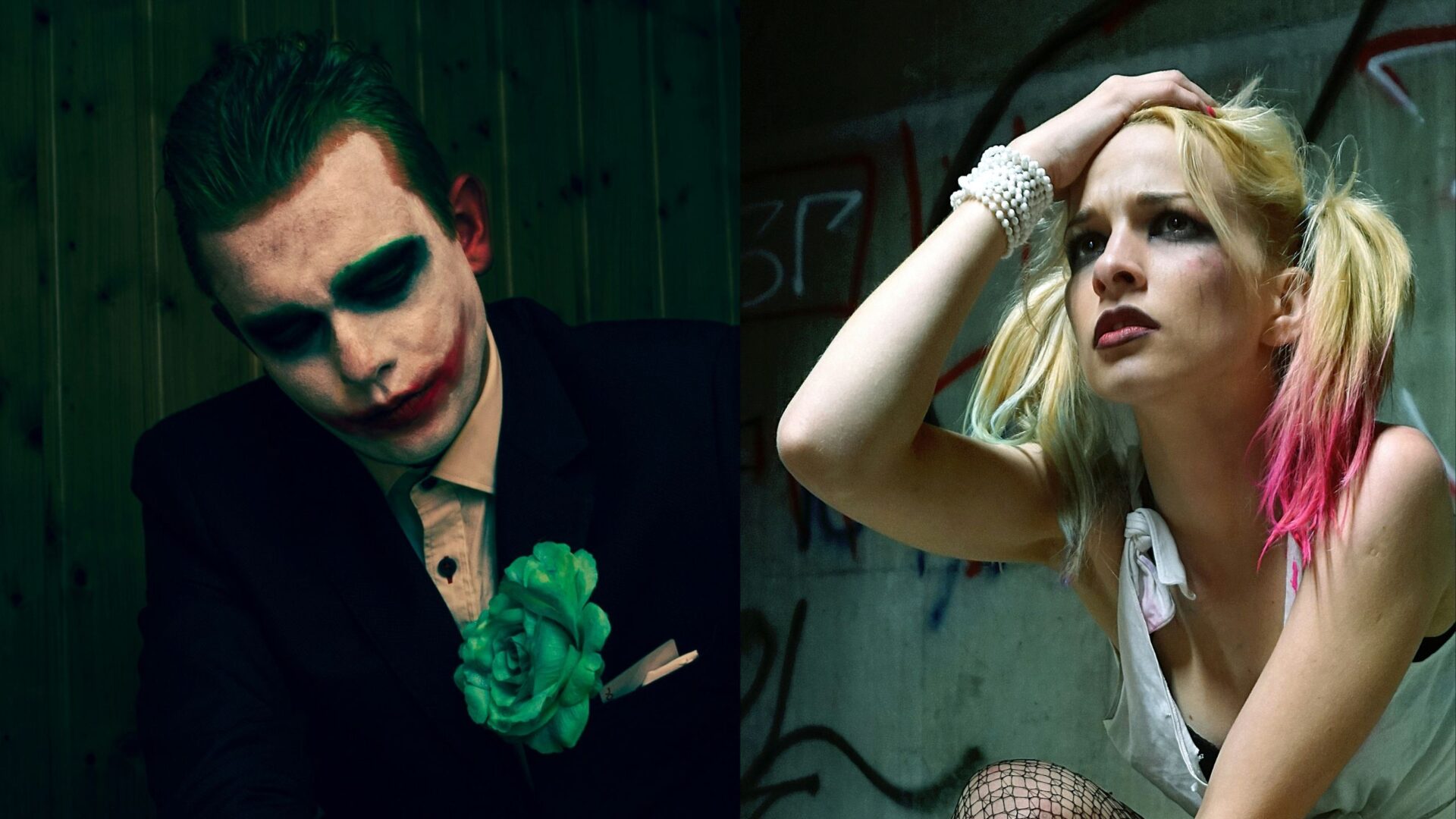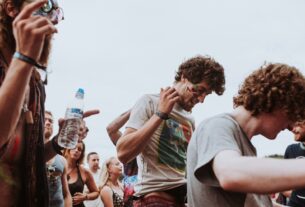Coulrophobia: The Fear of Clowns and Its Unsettling Origins
Coulrophobia, the fear of clowns, is a phenomenon that affects many people around the world. While clowns are traditionally associated with laughter, fun, and childhood entertainment, for some, the sight of a clown can evoke a sense of deep anxiety and fear. This fear is often tied to a number of psychological, cultural, and aesthetic factors that make the figure of a clown more unsettling than it is amusing.
Heart Penetration
Another significant aspect of coulrophobia is the exaggerated and unpredictable behavior commonly exhibited by clowns. Their extreme mood swings—from massive outbursts of loud, manic laughter to sudden, uncontrollable weeping—create an unsettling atmosphere that can make people feel uncomfortable or even frightened. This erratic emotional display seems to bypass logical reasoning and taps into deeper, more primal fears. The clown’s behavior, often unpredictable and difficult to read, can evoke a sense of vulnerability, as it challenges the social norms of controlled emotion and expression. When a clown bursts into hysterical laughter or unexpectedly begins crying, it feels like an invasion of personal space, as though their “masked” emotions are somehow able to penetrate one’s own sense of stability and safety. This ability to switch between exaggerated emotional states can trigger a deep sense of unease, making clowns seem more like a force of chaos than a source of joy, and thus heightening the fear they inspire.
The Joker Villain Clown
The character of the Joker, one of the most iconic villains in popular culture, epitomizes the darkest aspects of the clown figure. With his sinister, permanent grin and erratic, chaotic behavior, the Joker is the embodiment of all the fears that clowns represent. Unlike traditional clowns who aim to entertain and elicit laughter, the Joker uses his exaggerated smile and unpredictable actions as tools of terror. His lack of empathy, combined with a cruel sense of humor, presents him as the ultimate villain—someone whose outward appearance as a clown hides an inner malice and a complete disregard for societal norms. The Joker’s clownish features, such as his clown makeup and vibrant, disheveled appearance, are twisted into symbols of pure evil. His character, portrayed in various films and comics, often invokes a sense of dread, as his very presence suggests that madness and chaos are never far behind. The Joker’s transformation of the clown figure into an agent of destruction has cemented his place as a terrifying, larger-than-life villain, reinforcing the deep-seated fear many have of clowns as representations of unpredictable menace rather than innocent fun.
Harley Quinn
Interestingly, the reaction to clowns can also take a more paradoxical form: some individuals who are shocked or traumatized by the sight of clowns may later find themselves drawn to them, developing an inexplicable attraction or fascination. This counterintuitive response can be understood as another psychological coping mechanism, where the traumatic experience is not rejected or avoided, but instead embraced, internalized, and even idolized. For some, the clown becomes a symbol of both terror and curiosity, an object of fixation that offers a sense of both danger and allure. The person who once recoiled in fear may begin to see the clown as a complex symbol, embodying both terror and allure, danger and intrigue. This response is rooted in the human psyche’s way of processing extreme emotions. In some cases, the intense fear provoked by the clown may shift into an obsessive need to understand or tame it, as if by repeatedly confronting the source of trauma, one can assert control over it. This dual response—either avoidance or attraction—highlights the fascinating complexity of the human experience with fear and the ways in which people process and react to trauma.
This paradoxical attraction to what once caused distress is a form of emotional desensitization, as individuals try to make sense of their feelings through repeated exposure. The clown, once the embodiment of chaos, becomes a strange, almost comforting figure in its familiarity. It’s a way of reclaiming agency over a previously uncontrollable experience, attempting to master the emotions that arose in the face of such unpredictability. As with any deep psychological trauma, the person may find solace not in running away from the source of their fear but in confronting it head-on, perhaps even developing a strange, if unsettling, connection to it.
A striking example of this phenomenon can be seen in the character of Harley Quinn, a woman who was initially traumatized by the clownish figure of the Joker, only to become irrevocably drawn to him. Harley’s transformation from a brilliant psychiatrist to the Joker’s twisted accomplice is rooted in an abusive relationship with the Joker, whose chaotic, violent, and often clownish antics initially terrify her. However, rather than fleeing from the trauma, Harley falls in love with the very source of her distress. Her attraction to the Joker isn’t just about romantic love; it’s a deep psychological bond that arises from her own complex responses to abuse and manipulation. Over time, she embraces the madness and unpredictability that the Joker represents, seeing him not just as a figure of fear, but as someone who gives her a sense of identity and belonging. Her relationship with him is marked by an almost obsessive devotion, as she internalizes the chaos he embodies and becomes an active participant in it.
Harley’s story illustrates how trauma and fear can sometimes lead to fascination rather than rejection. It’s a powerful example of how individuals, particularly those who have been subjected to intense emotional turmoil, might find themselves inexplicably drawn to the very thing that once caused them harm. For Harley Quinn, the Joker—a figure of clownish malice and madness—becomes the epicenter of her identity, her strength, and her purpose. Rather than running away from the terrifying clown, she becomes consumed by him, embodying a tragic inversion of the typical fight-or-flight response. This paradox of attraction to the clown serves as a compelling reminder of the complexities of human psychology, where fear, trauma, and love can sometimes intertwine in deeply unsettling ways.
The Unnatural Smile: Why Clowns Are More Monster Than Jester
One of the primary causes of coulrophobia is the exaggerated and unnatural appearance of clowns. The most iconic feature of a clown is often their enormous smile, which can be disturbing rather than comforting. This overly large, painted grin is meant to convey joy, but its artificiality can have the opposite effect. Our brains are wired to recognize genuine human emotions, and when faced with a smile that doesn’t correspond to genuine feelings—like the fake, overdone grin of a clown—it creates a sense of unease.
The clown’s smile, in this case, becomes less a symbol of happiness and more a grotesque distortion of reality. This mismatch between the cheerful expression and the human instinct to read authenticity triggers a response of discomfort. Psychologists call this reaction the “uncanny valley” phenomenon, which occurs when something looks almost human but is just slightly off. In the case of clowns, the exaggerated makeup, with its large, painted smile and unnervingly blank eyes, can cause feelings of disconnection and fear.
Cultural Depictions: Clowns as Villains
The fear of clowns is not only fueled by their unsettling appearance but also by how they have been portrayed in popular culture. Over the years, clowns have been depicted as villains in various forms of media. From horror movies to psychological thrillers, clowns have often been cast as deranged killers or mentally disturbed individuals. Perhaps the most famous example of this is Stephen King’s “It,” in which the shape-shifting entity known as Pennywise terrorizes a group of children. The character of Pennywise, with his malicious grin and disturbing behavior, has become an iconic figure in horror, reinforcing the idea that clowns can be monstrous rather than funny.
In addition to films, real-life criminals such as John Wayne Gacy, the infamous serial killer who performed as a clown for children’s parties, have contributed to the dark association between clowns and criminality. These depictions have entrenched the idea that clowns, rather than being symbols of joy, may actually hide dark and sinister motives.
Clowns in the Public Sphere: Laws and Bans
The fear of clowns has even reached the point where it has impacted public policy. In France, a law was enacted banning the wearing of clown masks in public spaces. The law was introduced after a series of incidents where individuals dressed as clowns caused fear and panic. These “killer clowns,” as they were sometimes referred to, engaged in acts of intimidation, frightening people and even causing disturbances in public places. The legal response highlights how the fear of clowns has shifted from a personal phobia to a broader societal concern, with some seeing clowns as a potential threat to public safety.
Billy Bob Thornton and His Coulrophobia
One of the most famous individuals to publicly acknowledge their fear of clowns is actor Billy Bob Thornton. Known for his roles in films such as Bad Santa and Sling Blade, Thornton has openly admitted to suffering from coulrophobia. His fear is so intense that, during the filming of Bad Santa, he reportedly avoided contact with any clowns on set and even insisted that no clown costumes be worn in his presence. Thornton’s experience reflects the power of coulrophobia, which can affect anyone, regardless of their background or stature.
Thornton has spoken about how clowns are “creepy,” and his discomfort with them stems from their exaggerated expressions and the sense of unpredictability they evoke. His phobia is a reminder that even those who work in the entertainment industry, where clowns are often seen as harmless performers, can be deeply unsettled by their presence.
Conclusion: The Complex Nature of Coulrophobia
Coulrophobia is a complex and multifaceted fear. Whether it is the unnatural, oversized smile of a clown, the sinister portrayals in popular culture, or the association with real-life criminals, there are many factors that contribute to this fear. For some, clowns represent a threat to the natural order of human expression, with their fake smiles and exaggerated features. For others, it is the dark cultural legacy of clowns as villains and criminals that makes them terrifying. As society continues to grapple with the psychological and cultural implications of coulrophobia, it is clear that the seemingly innocent figure of the clown holds far more power over the human psyche than we may have initially realized.




